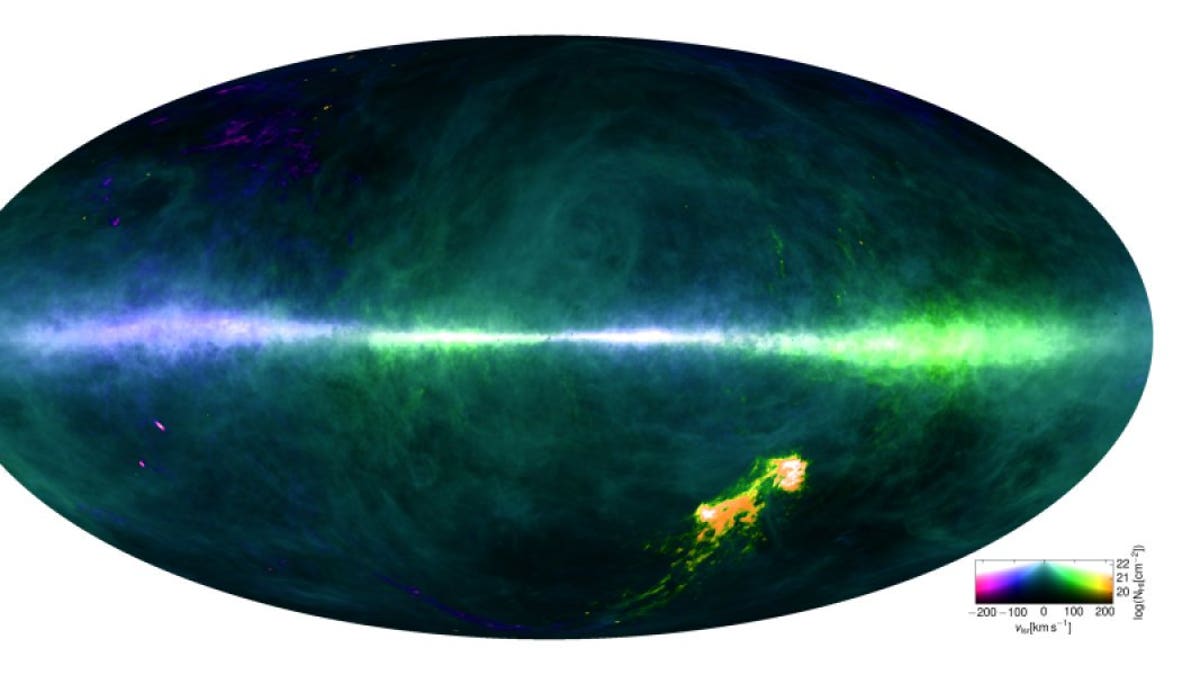
This HI4PI map was produced using data from the 100-m Max-Planck radio telescope in Effelsberg, Germany and the 64-m CSIRO radio telescope in Parkes, Australia. The plane of the Milky Way runs horizontally across the middle of the image. (Benjamin Winkel, Max Planck Institute, and the HI4PI collaboration)
Astronomers have produced an image of the Milky Way by mapping the element hydrogen, and it’s a beauty.
Using large, very sensitive radio telescopes in both Germany and Australia, scientists peered into the heavens and gathered oodles of data. In Australia, for example, researchers spent over 2,000 hours mapping the southern skies. The resulting map of hydrogen’s distribution across our galaxy has allowed scientists to discover new structures in the Milky Way, according to West Virginia University.
Related:
"The result of this research is a much more comprehensive map of our galaxy that will allow scientists to better understand the Milky Way and our galactic neighbors," D.J. Pisano, an astronomer and associate professor at West Virginia University, said in a statement. "This is a landmark for the field of astrophysics that will bring new insights for decades to come."
Hydrogen is our universe's most abundant element. The study describing the new survey was published in the journal Astronomy & Astrophysics.
Follow Rob Verger on Twitter: @robverger




















